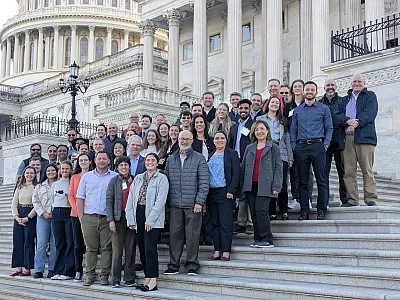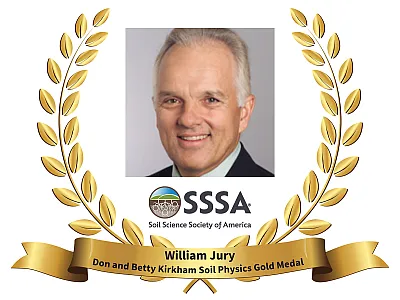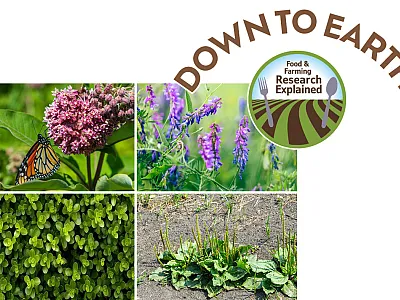New Editors-in-Chief for ASA, SSSA Share Their Vision for Society Publishing
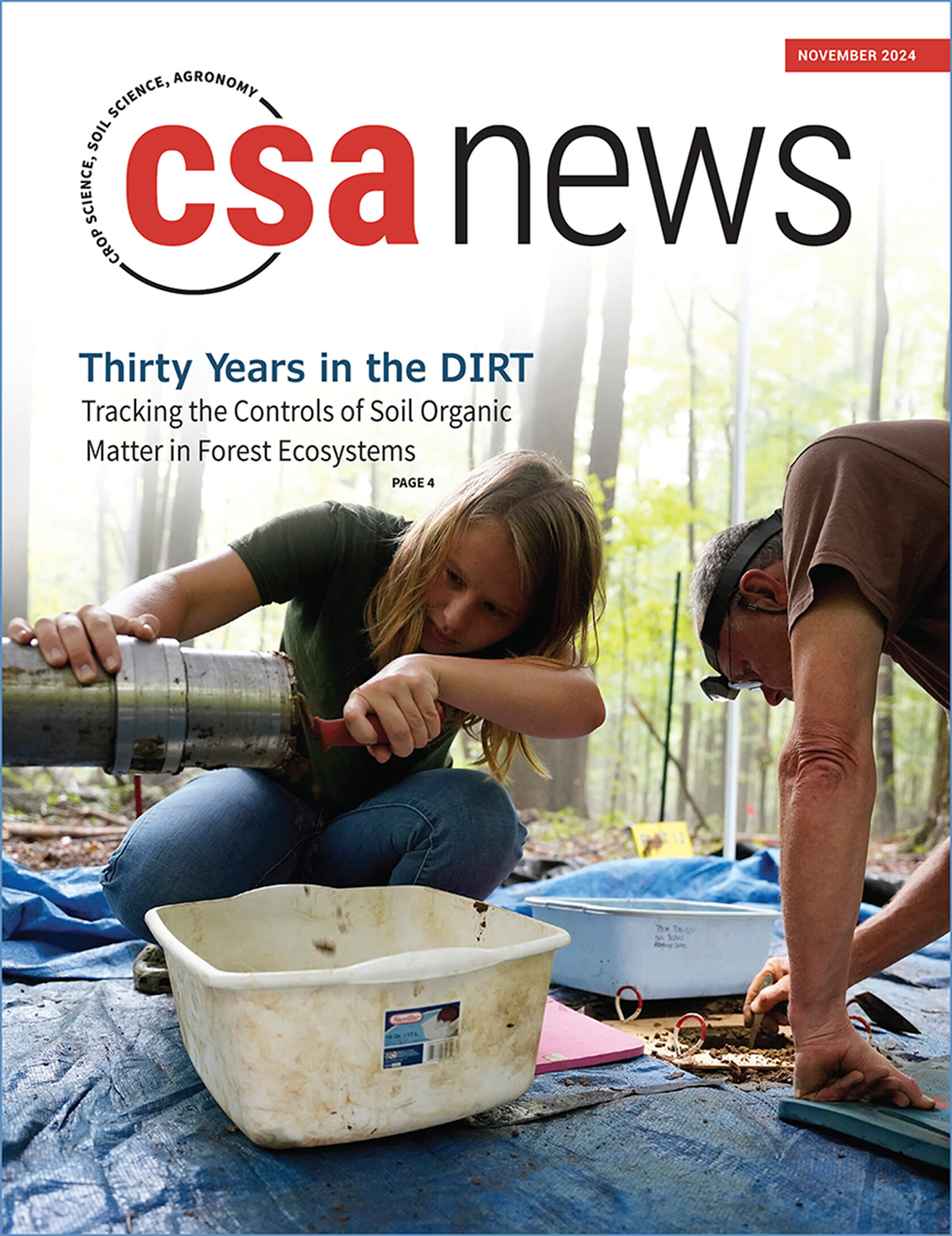
The Societies welcome two new editors‐in‐chief (EIC): Dr. David Clay and Dr. Markus Flury. Clay, currently serving as Interim ASA Editor‐in‐Chief, will begin a three‐year term in 2025, and Flury steps into his new role for SSSA on Jan. 1, 2025.
Both individuals bring enthusiasm and a wealth of experience to their new role, having been active in the Societies during their careers and serving on multiple editorial and review boards.
Flury is a Professor at Washington State University where he teaches and conducts research focused on soil physics. Growing up in Switzerland, he became intrigued with soils by way of environmental science. Exploring glaciers, glacier retreat, and carbon sequestration, he became fascinated with the role soils play in supporting society. “The world is coming to understand that soils, as a natural resource, are integral in food production and climate change.”
Flury’s research focuses on the physics of water flow and contaminant transport in soils and porous media, primarily in the vadose zone. In 2017, he received the prestigious Don and Betty Kirkham Soil Physics Award. He has served as an associate editor for the Journal of Environmental Quality and Water Resources Research journal and was co‐editor and editor of Vadose Zone Journal.
Clay is a Distinguished Professor of soil science at South Dakota State University. His research focuses on on‐farm research to develop and test sustainable precision‐farming practices and climate‐smart agricultural systems and increase water quality and soil health in the Northern Great Plains.
Clay’s service to the Society includes leading the American Society of Agronomy as President in 2022. His editorial experience includes serving as an associate editor, senior editor, and editor for Agronomy Journal. He has also served as editor for multiple books, including Precision Agriculture Basics; Salinity and Sodicity: a Global Challenge to Food Security, Environmental Quality, and Soil Resilience; iGrow Corn: Best Management Practices for Corn Production; and the 2015 Midwest Cover Crops Field Guide.
The EICs provide leadership for the publications of the Society they represent, which among the three Societies, includes 13 peer‐reviewed scientific journals as well as books, magazines, and podcasts. In a recent CSA News magazine interview, Clay and Furry shared their vision, individual approach to overcoming challenges, and their plan to increase the impact of their respective journals. The following interview has been edited for clarity and length.
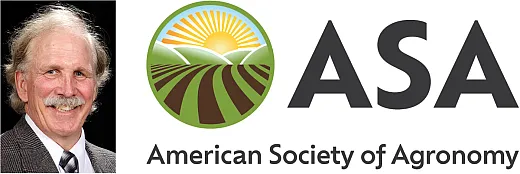
CSA News: How do you see your role as Editor‐in‐Chief?
Clay: I believe that the Editor‐in‐Chief should be a strong advocate for scientific discovery, literacy, ethics, diversity, data integrity, open science, and data transparency and should encourage training opportunities wherever possible. I anticipate helping members share their research and improve their communication and editing skills while serving as EIC.
Flury: The EIC role is unique, having an overarching role to chart the course for all the Society journals and communications going forward. Increasing the communication between editors, editorial boards, staff, publishers, and members and simultaneously promoting the value of our journals is needed.
CSA News: What challenges do our journals face?
Clay: Our journals need to be more responsive to our members’ needs. We also need our members to see value in our journals and recognize our editorial boards, staff, and reviewers are here to help them produce the “best” paper possible to share their work. To accomplish this, we need to increase mentoring of our members to improve their communication skills, helping them put their thoughts into a structure that is publishable in our journals.
Flury: I see competition from for‐profit journals, along with raising the impact of our journals, as our main challenges. Tri‐Society journals have traditionally been recognized as the best sources of information in our field. Recently, there has been … increased competition from commercial and predatory publications. All smaller societies are limited by their smaller membership, which limits the number of submissions and, in turn, hinders impact.
To raise our reputation and impact of our journals, we must be competitive and show our membership the value of making our journals their first choice when publishing their work.
CSA News: Dr. Flury, how do we communicate the value of our Society and Society journals?
Flury: At every opportunity, we need to highlight and promote the Societies and our journals. We can write editorials, make presentations, and provide workshops training students and early career scientists about nonprofit journals and how to best communicate their research.
CSA News: Increasing the visibility and impact of each journal is a shared goal. What approach would you take to accomplish this?
Flury: The visibility and impact of our journals are tied to the quality and number of papers we publish. [We need to help] members feel that our journals are just as much their professional home as our Society; therefore, supporting the Society means supporting our journals. Our members’ conscious first publishing choice needs to be our journals.
When more members make an effort to have their quality work published in Society journals, our impact and visibility will rise.
Clay: Creating special issues that are topic focused will raise visibility and impact. By linking the topics and having all articles relate to every other article, people can see the way science has evolved and more easily identify solutions to problems.
CSA News: What barriers to success must we address?
Clay: Simplifying the submission process, ensuring accurate and timely reviews, and being responsive to members will increase the success of our journals and the Societies.
CSA News: Open access to scientific information is on everyone’s mind. What are your thoughts?
Clay: The publication of papers as open access has reduced the value of library subscriptions. While this change in the publication model is great for readers and authors, there are financial concerns associated with increased publishing costs needed to support this model.
We must balance the need for data transparency with the needs of professionals and students to publish data while being aware of who owns the information.
Flury: Open access is important, as everyone should be able to access scientific information freely. However, we must address questions related to article processing charges (APC) and making open access also affordable to authors who would not be able to pay for APCs.
CSA News: What value is there in the Societies publishing journals?
Flury: The Societies and journals benefit from each other in spreading science, connecting the community, and supporting each other financially. The Societies offer us a professional home and a family, and so do the journals. The journals, similar to the meetings, provide us with a way to connect, communicate, and share our work.
Clay: We need to ensure our journals are the go‐to trusted source for agricultural information benefiting the agricultural community and society in general.

CSA News: What is the value of members publishing in journals or volunteering to peer‐review?
Flury: I see our journals as an extension of our Society. Publishing high quality scientific research in our journals supports our Society and furthers the work by sharing knowledge while increasing the visibility of our work and the Society.
Volunteering to peer‐review papers further assists our professional family and encourages young scientists in their careers. Reviewing papers serves as a great teaching tool to improve the reviewer’s and author’s communication skills and provides an avenue for member engagement.
Clay: Peer reviewers serve our members and enhance the quality of articles within our journals. Providing training that enables reviewers to provide good, useful, timely thoughts and critique during the review process will serve to educate our members and advance our journals.
These trainings can provide opportunities to new and potential members to become active, forge relationships, and make a commitment to our Societies.
Clay and Flury are excited to utilize their experience and lend their vision to this new opportunity to serve Society members. They are confident that with a collaborative effort among the membership, staff, editors, and reviewers, our journals will thrive, elevate our members and their work, and serve society as a whole.
Societies Take Stand Against Paper Mills
ASA, CSSA, and SSSA are now recognized as signatories of the United2Act initiative (https://united2act.org), which seeks “to address the collective challenge of paper mills in scholarly publishing.” Paper mills are described by the Committee on Publication Ethics (COPE) as “profit oriented, unofficial and potentially illegal organizations that produce and sell fraudulent manuscripts that seem to resemble genuine research.” They can undermine trust in peer review journals and ultimately the public’s trust in science.
Text © . The authors. CC BY-NC-ND 4.0. Except where otherwise noted, images are subject to copyright. Any reuse without express permission from the copyright owner is prohibited.



